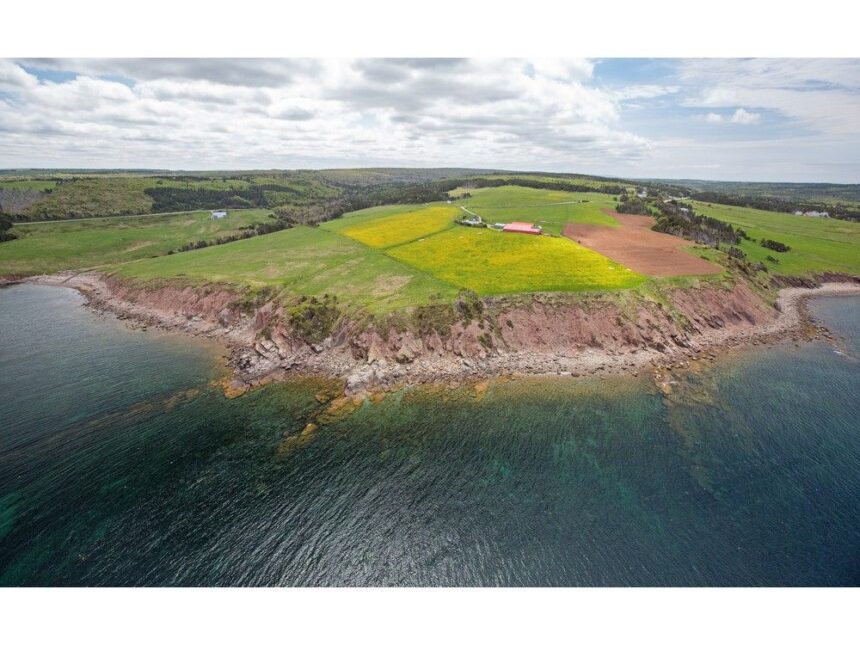‘Let’s not forget what the end goal is: Don’t build in unsafe areas.’Published Apr 15, 2025 • 3 minute readThe coastline off Mabou is seen in this photo provided by the Province of Nova Scotia. Contributed Cape Breton Regional Municipality Mayor Cecil Clarke said the example land-use and planning bylaws revealed by the province on Tuesday will help the CBRM deal with the impacts of climate change. Chris Connors/Cape Breton PostThe Nova Scotia Community College Sydney Waterfront campus provided an ideal setting Tuesday as the province unveiled some of the ways it’s helping municipalities and property owners balance coastal development with the threats of climate change and rising sea levels.Nova Scotia Environment and Climate Change Minister Tim Halman released new example land-use and planning bylaws each of the province’s 49 municipal units can use as templates to regulate coastal protection in their communities.THIS CONTENT IS RESERVED FOR SUBSCRIBERS ONLY.Subscribe now to access this story and more:Unlimited access to the website and appExclusive access to premium content, newsletters and podcastsFull access to the e-Edition app, an electronic replica of the print edition that you can share, download and comment onEnjoy insights and behind-the-scenes analysis from our award-winning journalistsSupport local journalists and the next generation of journalistsSUBSCRIBE TO UNLOCK MORE ARTICLES.Subscribe or sign in to your account to continue your reading experience.Unlimited access to the website and appExclusive access to premium content, newsletters and podcastsFull access to the e-Edition app, an electronic replica of the print edition that you can share, download and comment onEnjoy insights and behind-the-scenes analysis from our award-winning journalistsSupport local journalists and the next generation of journalistsRegister to unlock more articles.Create an account or sign in to continue your reading experience.Access additional stories every monthShare your thoughts and join the conversation in our commenting communityGet email updates from your favourite authorsSign In or Create an AccountorArticle contentIn addition, Halman announced that the province will provide the Nova Scotia Federation of Municipalities (NSFM) with $1 million to help municipalities adopt those changes, as well as $344,106 to hire a climate change policy and sustainability analyst to support municipalities.HAZARD MAPHalman said the province is delivering on its promise to replace the Coastal Protection Act with a series of environment-related legislation, plans and tools, including an updated online coastal hazard map that shows possible flooding for the current year, 2050 and 2100; a guide showing homeowners how to use trees, plants and other natural techniques to protect their properties; and a checklist and education video real estate agents can use to help clients make informed decisions about buying coastal property.“So I work in downtown Halifax. How do I how do I regulate 13,000 kilometers of coastline from downtown Halifax? What’s needed here in CBRM as a solution to deal with coastal erosion could be very different in Southwest Nova Scotia and a municipality like Clare or Digby. So municipalities are our partner in coastal action,”Article contentHalman said. “What we’ve done today is enhance and further empower municipalities via resources to make sure that the rules and zoning are in place so you don’t build in unsafe areas. This is a very granular approach. What’s required in the South Shore for coastal action, coastal protection, could be very different than say compared here in in Cape Breton.”“It’s working already. Just like I don’t expect municipalities to deliver health care because that’s the provincial responsibility, we need municipalities to continue to do their responsibility in zoning and bylaws. That’s what they do. And they’ve said to us, they ‘We need some support,’ … so we’re granting money to the NSFM to offer them that support. We have right now for them the example bylaws that they can utilize. Let’s not forget what the end goal is: Don’t build in unsafe areas. And we now have the information out to Nova Scotians to make an informed decision. The municipalities will now be able to access resources to make sure they develop those rules so residents don’t build in the unsafe areas we know exist along our coastline.”Article content Nova Scotia Environment and Climate Change Minister Tim Halman released new example land-use and planning bylaws each of the province’s 49 municipal units can use as templates to regulate coastal protection in their communities on Tuesday during a press conference at the Nova Scotia Community College Sydney Waterfront campus. Chris Connors/Cape Breton PostPUBLIC CONSULTATIONSCape Breton Regional Municipality Mayor Cecil Clarke said council will follow up with a roundtable discussion with Halman then municipal planning staff will prepare a public presentation so residents can weigh in on any bylaw changes.“I’m hoping that by the fall, we’ll be able to have that type of public participation process in place,” he said.Clarke said the NSCC Sydney Waterfront campus is an example of how developers can adapt to environmental changes.The 305,000-square-foot campus was built on land that was projected to be underwater by 2100 so builders raised the site 1.25 metres by driving more than 800 steel piles down to the bedrock.“We’re at the Nova Scotia Community College where we planned effectively to make sure that rising sea levels were accommodated and still could be near the water. So it doesn’t eliminate people being near the water, you just have to plan more effectively,” Clarke said.“We live in a maritime environment and not only the Atlantic coast, but we also have an inland sea to deal with – the Bras d’Or Lakes – and we’ve seen the impact on the coastal environment with severe weather events and erosion. Council just recently dealt with New Waterford for expropriating lands to move sewer lines that have been impacted and creating development issues.“We have living examples here in our community of responding to the impacts of climate change, and so it’s really prudent upon us to work with the province, work with the Nova Scotia Federation of Municipalities and realtors to have more effective planning in place. This is a tool. It’s part of a next step, and the government’s investing resources and not leaving us to our own devices, and that’s a positive thing.”-30-Article content
Province provides CBRM with coastal bylaw blueprints











